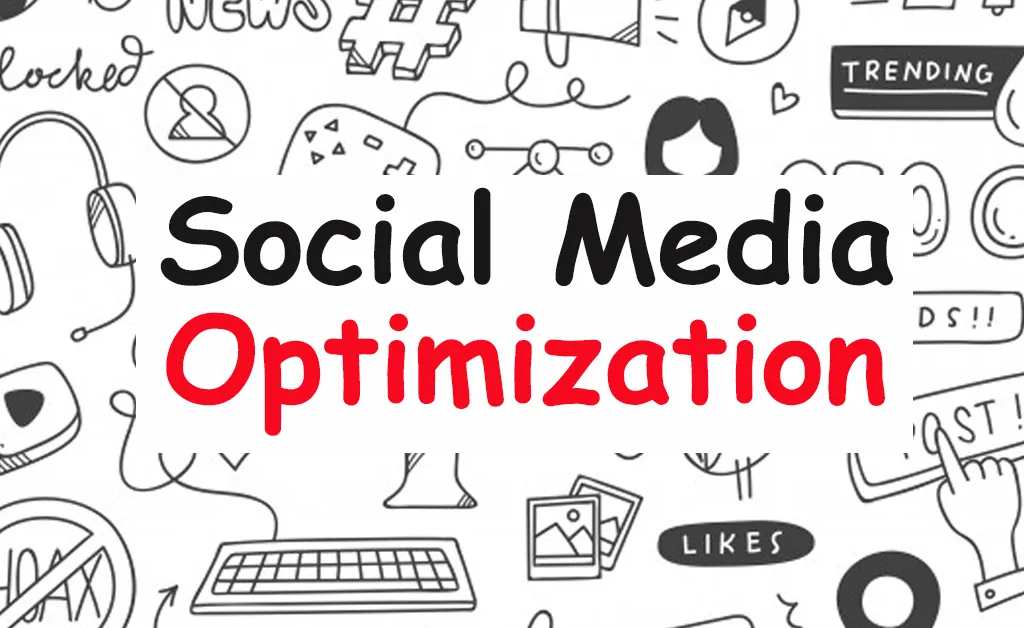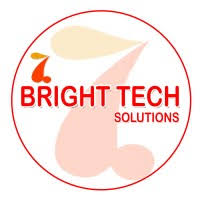Organizations should use virtual entertainment enhancement (SMO) to remain serious in today’s fast-growing world. Social Media Optimization assumes a basic part in improving a brand’s permeability, encouraging commitment, and driving designated traffic to sites. While virtual entertainment advertising centers around making content to share your image’s message, web-based entertainment advancement revolves around refining your online entertainment profiles and content to work on general execution and adequacy. By decisively improving your presence on friendly stages, you can guarantee better reach and communication with your crowd.
It’s an overall guide to understanding every nook and corner of social media optimization to create a better online presence and connect with the audience more effectively.

Table of Contents:
1. What is Social Media Optimization?
2. Why Social Media Optimization is Significant for Businesses
3. Key Benefits of Social Media Optimization
4. The Most Important Components of SMO
5. Best Practices to Optimize Social Media
6. Equipment for Social Media Optimization
7. Measuring the Success of Your Social Media Optimization Strategy
8. Conclusion
Understanding Social Media Optimization?
Social media optimization is the process of optimizing your social media profiles and content for visibility, engagement, and reach across all social media platforms. Similar to search engine optimization, or SEO, SMO seeks to optimize aspects of your social media presence and efforts to increase engagement among your target audience.
The approach will position businesses on platforms like Facebook, Instagram, Twitter, LinkedIn, and Pinterest by optimizing the content and profiles for better reach and engagement. It involves creating posts that are compelling and with relevant hashtags, optimizing social media handles, engaging in community building, and tracking performance analytics.
Why Optimization of Social Media Is Crucial for Businesses?
SMO is no less important. Since billions are using it every day, becoming noticeable and engaging for business is hard work. SMO guarantees to keep your company ahead by doing the following:
Improving brand awareness:
SMO will help in the wide exposure of the business from social media platforms for better visibility to customers.
Increase in Engagement:
With better optimization of engagement, businesses can develop closer relationships with their audience through likes, comments, shares, and overall engagement.
Drive Website Traffic:
Optimized social media profiles and content are the funnels that drive users to a company’s website to create leads and conversions.
Improving SEO:
Social media is now one of the signal factors for SEO ranking. Proper SMO therefore complements SEO work to enable firms to improve their ranking in search engines.
Brand loyalty:
Through SMO, businesses can continuously engage an audience with useful content. A loyal customer base will therefore trust and be reliant on their products or services.
Key Benefits of Social Media Optimization:
Social media optimization, when done well, offers many very key benefits to businesses. Let’s take a deeper look at some of the most important advantages of social media optimization:
1. More Visibility:
SMO helps in making your brand more visible on all different social media platforms. In such a case, the business can gain more followers, likes, and shares by posting high-quality and engaging content where the message can reach a larger audience.
2. Better Brand Recognition:
By optimizing your social media profiles and content, you maintain consistency and professionalism in showcasing your brand. This is a way of achieving better recognition; it’s a more memorable and trustworthy brand for your audience.
3. More Engagement:
The major ways of engagement include social media optimization. SMO grows your audience into actually being engaged with your content in the form of likes, comments, and shares. These kinds of interactions are important in nurturing the relationship with your audience by maintaining investment in your brand.
4. More Website Traffic:
This will also allow you to bring traffic from your social media profiles to your website. By providing clear CTAs in your posts and a well-optimized social media bio with links back to the website, there is full capability to convert followers on social media into website visitors and customers of your business.
5. Stronger Online Reputation:
SMO helps a company to maintain its good online credibility through continued engagement and optimization of the content. When businesses respond to comments, clear customer queries, and add value through their posts, they come off as trusted and reliable sources in their particular line of trade.
6. Improved Conversion Rates:
Social media optimization isn’t just about growing your audience; it also means converting them into paying customers. It helps a business drive more conversions for growing revenue through the creation of highly targeted, optimized content that truly caters to the interests and needs of the audience.
Key Ingredients of Social Media Optimization:
To get the best results out of social media optimization, a business should precisely know which factors to pay attention to, including:
1. Optimization of Profiles:
Your social profiles are, indeed, the digital face of your brand. Profile optimization is the first stage of any social media optimization policy. Ensure that your profile information is complete and that it is consistent with and reflective of your brand. Major elements of profile optimization include:
Profile picture:
An immediately recognizable, high-quality, branded image (such as your company logo).
• Username/Handle:
Utilize the same username across all platforms, and ensure your target audience can find you.
• Bio:
Create a bio that describes your business and its offerings with keywords related to your business.
• Website link:
Link directly to your website or to a landing page that will route traffic.
• Contact info:
Ensure your contact information has been updated and is readily available.
2. Content Optimization:
Content is the backbone of your social media optimization efforts. Following are some ways to optimize your content for better reach and engagement:
Use engaging visuals:
Video or image-based content performs better than text-only updates.
Optimize for each platform:
Each social media has its formats and constraints. For example, Twitter demands small, punchy updates, while Instagram is all about visual telling.
Post regularly:
Chalk out a schedule of posting, which will help to retain the attention of the audience.
Use hashtags wisely:
Hashtags can help categorize a post and make it more findable. Use relevant and trending hashtags to reach an audience of a bigger magnitude.
Include CTAs:
Always encourage the audience to take action, which should be promoted in your posts, whether it is “Learn more,” “Sign up,” or “Shop now.”
3. Engagement Optimization:
Engagement with your audience is an important element in relationship building and loyalty. To create maximum engagement, businesses need to:
Comment and message response:
Through comment and message responses, let them know their input means something to you. Do so promptly.
Encourage user-generated content:
Request your audience share their experience with your brand through reviews, photos, or testimonials.
Run Interactive Campaigns:
This includes events like polls, contests, and live Q&A sessions; all are outstanding ways to drive engagement and make it community-oriented.
4. Analytics and Tracking:
To understand what works and what doesn’t in your social media optimization strategy, you have to analyze the KPIs, including:
Engagement Rate:
It is a proportion of likes, comments, shares, and clicks, to the number of followers.
Reach:
The number of unique users that view your content.
Impressions:
The total number of views your content receives.
Referral traffic:
The number of visitors that visit your website through social media platforms.
By utilizing these metrics, businesses could identify the flaws that require change and update them in their SMO strategies.
Best Practices for Social Media Optimization:
Eager to extract maximum efficiency from your social media optimization? Let’s get you underway.
1. Choose the Right Platforms:
Not every social networking site is suitable for all businesses. Focus on those social media platforms where your target audience is most active. For example, if yours is a B2B company, then LinkedIn might be more productive than Instagram. On the other hand, if your business operates within the fashion or lifestyle vertical, then your possibilities of engaging visually become much better with Instagram and Pinterest.
2. Influencer Marketing:
Partnering with influencers who resonate with your target audience can extend your reach into new and authentic areas of social media. Influencers can introduce your brand to new audiences and lend credibility to your products or services.
3. Optimize for Mobile:
Most of the users of social media use their mobile devices to access the platforms. Make sure your content is mobile-friendly, and that images and videos can load quickly and text is easily readable on a small screen.
4. Be Authentic:
Authenticity is the road to trust with your audience. Shun the exact promotional content and ensure the creation of value for your people. Give them behind-the-scenes content, success stories of your customers, and actual interaction; this will help you build a deeper connection with your audience.
5. Keep Up with Trends:
The social media space is ever-evolving. Keep tabs on fresh trends, and when a new platform feature, viral content format, or shift in user behavior emerges, revisit your strategy accordingly.
6. Cross-Promote Content:
Promote your social media content through all possible distribution sources like email newsletters, blogs, and websites. Cross-promotion increases the probability of your content being viewed and shared more.
7. Schedule Posts at Optimal Times:
Analyze audience activity patterns to determine the peak times for posting. This is likely to increase the level of engagement in content; posting at the most active times is likely to raise the level of views and shares dramatically.
Social Media Optimization Tools:
Using the right tools makes it so much easier and manageable across social media optimization efforts. Below are some popular tools used for social media optimization:
Hootsuite:
This full-service social media management tool allows you to schedule posts, monitor engagement, and analyze performance easily across platforms.
Buffer:
This is an intuitive platform for social media post scheduling and analysis.
Canva:
A designing tool that will help in designing spectacular content for your social media profiles.
SproutSocial:
This is one of the tools for managing social media, observing analytics, and engaging with your audience.
BuzzSumo:
This tool finds trending content and top influencers in your industry.
Use the following KPIs to see how well your social media optimization strategy is working:
Follower growth:
If that number goes up, it means your brand is getting wider exposure and gaining new users.
Engagement rate:
If it’s high, it implies that the audience is resonating with your content.
Referral traffic:
Also, track website traffic influenced by social media using tools like Google Analytics.
Conversion rate:
The ratio of social media users that are converting into leads, customers, or subscribers.
These metrics will have to be reviewed from time to time for you to get the best out of your SMO strategy.
Conclusion:
Social media optimization is an integral element of any successful digital marketing strategy. Improvement in social media profiles, optimization of content, and audience engagement will help drive more visibility to your brand, fostering good relationships with the customers, and driving traffic toward the website. In this way, compliance with best practices for optimization and using appropriate tools will ensure that the business is competitive at the front and expands during continuous digital evolution.
Remember, consistency, creativity, and adaptability are the keys to social media optimization. As the social media landscape shifts, so too must your optimization effort if you want it to stay relevant and effective toward your goals.






